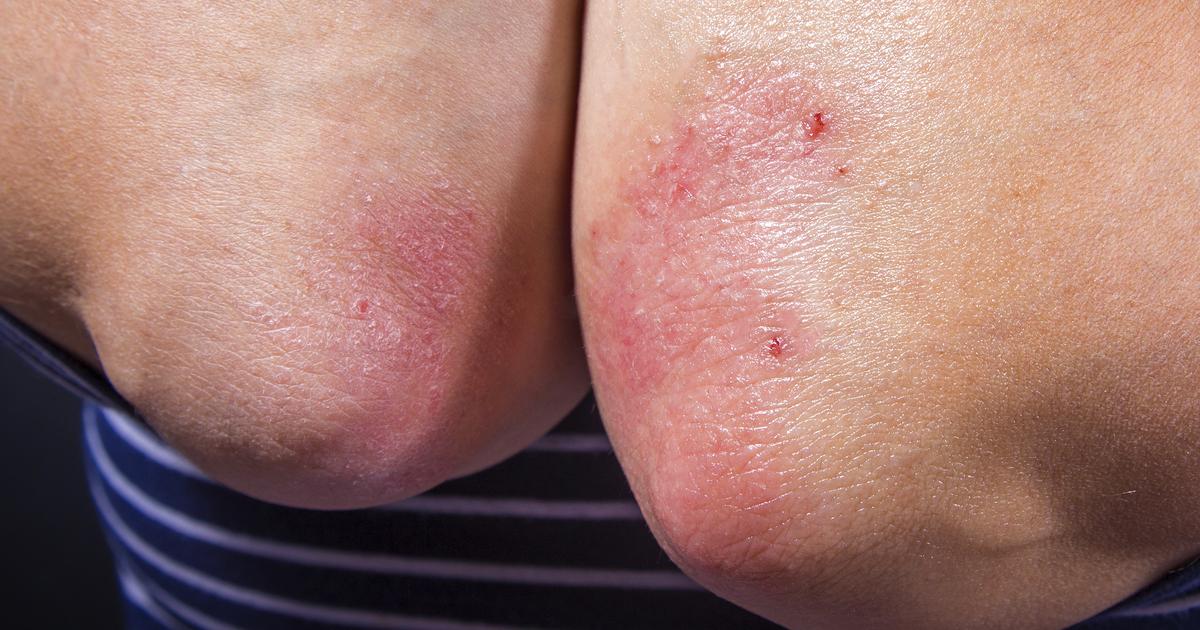Symptoms Of Psoriatic Arthritis To Watch For
Psoriatic arthritis is a chronic disease where an individual experiences inflammation of the tissues in their skin and those that make up their joints. Symptoms that affect the skin of an individual who has psoriatic arthritis do not have to occur at the same time as those that affect their joints. Between fifteen and twenty-five percent of all individuals diagnosed with psoriasis will develop psoriatic arthritis. Psoriatic arthritis is caused by an abnormal reaction by the immune system, where it mistakenly attacks healthy tissues in the body. The tissues affected by psoriatic arthritis are those that make up the joints and skin.
Diagnosis of psoriatic arthritis is made with the use of a physical examination, x-rays, MRIs, blood tests, and joint fluid tests. For those suffering from psoriatic arthritis, it is of the utmost importance that reliable treatments are used as quickly as possible.
Joint Pain And Stiffness

Joint pain and stiffness most often occur at some point after the affected individual has developed skin symptoms related to psoriatic arthritis. The most common parts of a patient's body affected by joint pain and stiffness include the spine, fingertips, feet, and toes. Joint pain and stiffness occur in psoriatic arthritis because the patient's immune system launches an inappropriate attack on the tissues that line the joint and fluids inside them.
These joint linings and the fluid around them are what protects the bones of the joint and provides lubrication to reduce friction and damage when the joint moves. These components of an individual's joint cannot perform these functions when the lining is inflamed and swollen. Instead of reducing friction and providing lubrication, the effects of psoriatic arthritis actually cause more friction, decrease lubrication, and cause an affected individual to experience pain and limited mobility in their joints.
Muscle And Tendon Pain

Muscle and tendon pain may develop in a psoriatic arthritis patient. When the immune system of an affected individual attacks and damages tissues lining their joints, they begin to swell and become inflamed. The swelling and inflammation can cause the muscles that neighbor the joint to become overstretched. An overstretched muscle can cause an individual to experience pain, as some of the small muscle fibers have been torn.
A tendon is a structure in the body made of strong fibrous collagen fibers that attach an individual's muscles to their bones. Swelling in the joints precipitated by psoriatic arthritis can cause the tendons to become stressed and overworked from holding the muscle to a bone in an area where swelling and inflammation are present. Muscle and tendon pain are common when swelling in the joints becomes severe due to psoriatic arthritis.
Swollen Fingers And Toes

One of the most common symptoms of psoriatic arthritis is swelling of the fingers and the toes. An individual's fingers consist of over two dozen joints, as do their toes. The fingers and toes are especially vulnerable to the effects of any type of arthritis because more joints are concentrated in a smaller area. Because the joints that make up the fingers and toes are also very small compared to other joints in the body, they are more susceptible to swelling that can become debilitating.
Swelling in the fingers and toes can compress blood vessels that supply these tissues with oxygenated blood as well as the nerves that function to move the fingers and toes. Swollen fingers and toes can cause individuals to have difficulty moving and using them in everyday life. Swollen joints cause the fingers and toes to have a limited amount of mobility, decreased range of motion, and impairment of sensations.
Fatigue

Some individuals affected by psoriatic arthritis may experience fatigue as a symptom of their disorder and the effects it is having on other parts of the body. Fatigue is a lack of energy in the body that occurs when the cells are unable to produce enough ATP to meet its demand. A constant supply of oxygen and other nutrients are needed for the cells to produce enough usable energy. An individual who has psoriatic arthritis that develops inflammation in the tissues of the heart or lungs will have less circulating oxygen in their bloodstream to deliver to the cells around the body.
This malfunction occurs because the inflamed organs are unable to function correctly. Inflamed tissues of the heart can impair its ability to pump blood, which means cells around the body cannot produce enough cellular energy to meet its needs. This energy shortage can cause a psoriatic arthritis patient to experience fatigue.
Scaly Patches Of Skin

The skin of an individual affected by psoriatic arthritis becomes damaged when their immune system attacks the skin cells inappropriately. When skin becomes damaged, the body utilizes healing mechanisms to repair the damage done to the cells and replace those that have been lost. As the immune system of a psoriatic arthritis patient repeatedly attacks the cells of their skin over time, the healing mechanisms can cause an accumulation of cells in the affected area.
This accumulation of skin cells may be scaly, raised, red, and patchy. In some individuals who have psoriatic arthritis, the accumulated skin cells will begin to peel. These skin manifestations of psoriatic arthritis tend to most commonly affect the elbow tips, scalp, knees, genital areas, naval, and ears. Most individuals who have psoriatic arthritis develop such skin symptoms long before they have symptoms in their joints.
